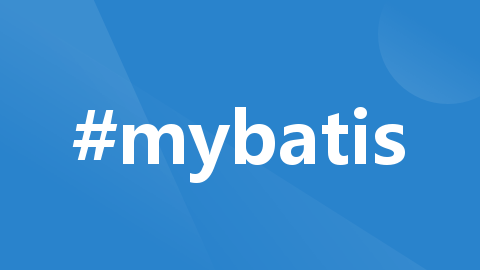
深入理解 MyBatis-Plus 批量保存方法
在项目开发中,需要插入批量插入20多万条数据,通过日志观察,发现在调用MyBatis-Plus中的saveBatch()方法性能非常的差,本篇文章主要分享一下saveBatch()的原理以及使用的注意事项1: 想要批量执行操作 数据库链接参数加上rewriteBatchedStatements=true2: 根据doUpdate(ms,parameter). 完成SQL的拼装的原理可以得出,如果批
前言
在项目开发中,需要插入批量插入20多万条数据,通过日志观察,发现在调用MyBatis-Plus中的saveBatch()方法性能非常的差,本篇文章主要分享一下saveBatch()的原理以及使用的注意事项
原理
我们通过源码的形式进行解析saveBatch()方法的原理
@Transactional(rollbackFor = Exception.class)
default boolean saveBatch(Collection<T> entityList) {
//DEFAULT_BATCH_SIZE 默认是1000
return saveBatch(entityList, DEFAULT_BATCH_SIZE);
}
@Transactional(rollbackFor = Exception.class)
@Override
public boolean saveBatch(Collection<T> entityList, int batchSize) {
String sqlStatement = getSqlStatement(SqlMethod.INSERT_ONE);
//分批执行SQL
return executeBatch(entityList, batchSize, (sqlSession, entity) -> sqlSession.insert(sqlStatement, entity));
}
我们看下saveBatch是怎么批量执行的
public static <E> boolean executeBatch(Class<?> entityClass, Log log, Collection<E> list, int batchSize, BiConsumer<SqlSession, E> consumer) {
Assert.isFalse(batchSize < 1, "batchSize must not be less than one");
return !CollectionUtils.isEmpty(list) && executeBatch(entityClass, log, sqlSession -> {
int size = list.size();
int i = 1;
for (E element : list) {
//数据最终保存在StatementImpl.batchArgs中,用于批量保存
consumer.accept(sqlSession, element);
if ((i % batchSize == 0) || i == size) {
//批量保存StatementImpl.batchArgs中数据
sqlSession.flushStatements();
}
i++;
}
});
}
通过flushStatements()方法我们可以看到最终调用的是StatementImpl中的executeBatchInternal()方法。注意:代码过长,下面方法做了删减。
protected long[] executeBatchInternal() throws SQLException {
synchronized (checkClosed().getConnectionMutex()) {
if (this.connection.isReadOnly()) {
throw new SQLException(Messages.getString("PreparedStatement.25") + Messages.getString("PreparedStatement.26"),
MysqlErrorNumbers.SQL_STATE_ILLEGAL_ARGUMENT);
}
if (this.query.getBatchedArgs() == null || this.query.getBatchedArgs().size() == 0) {
return new long[0];
}
// we timeout the entire batch, not individual statements
int batchTimeout = getTimeoutInMillis();
setTimeoutInMillis(0);
resetCancelledState();
try {
statementBegins();
clearWarnings();
// 如果配置rewriteBatchedStatements 开启多SQL执行
if (!this.batchHasPlainStatements && this.rewriteBatchedStatements.getValue()) {
if (getQueryInfo().isRewritableWithMultiValuesClause()) {
return executeBatchWithMultiValuesClause(batchTimeout);
}
if (!this.batchHasPlainStatements && this.query.getBatchedArgs() != null
&& this.query.getBatchedArgs().size() > 3 /* cost of option setting rt-wise */) {
return executePreparedBatchAsMultiStatement(batchTimeout);
}
}
return executeBatchSerially(batchTimeout);
} finally {
this.query.getStatementExecuting().set(false);
clearBatch();
}
}
}
我们再看下insert做了什么事情
public int insert(String statement, Object parameter) {
return update(statement, parameter);
}
public int update(String statement, Object parameter) {
try {
dirty = true;
MappedStatement ms = configuration.getMappedStatement(statement);
return executor.update(ms, wrapCollection(parameter));
} catch (Exception e) {
throw ExceptionFactory.wrapException("Error updating database. Cause: " + e, e);
} finally {
ErrorContext.instance().reset();
}
}
public int update(MappedStatement ms, Object parameter) throws SQLException {
ErrorContext.instance().resource(ms.getResource()).activity("executing an update").object(ms.getId());
if (closed) {
throw new ExecutorException("Executor was closed.");
}
clearLocalCache();
return doUpdate(ms, parameter);
}
重点方法在doUpdate(ms,parameter). 完成SQL的拼装
@Override
public int doUpdate(MappedStatement ms, Object parameterObject) throws SQLException {
final Configuration configuration = ms.getConfiguration();
final StatementHandler handler = configuration.newStatementHandler(this, ms, parameterObject, RowBounds.DEFAULT, null, null);
final BoundSql boundSql = handler.getBoundSql();
final String sql = boundSql.getSql();
final Statement stmt;
// 数据的SQL语句必须完全一致,包括表名和列
if (sql.equals(currentSql) && ms.equals(currentStatement)) {
int last = statementList.size() - 1;
stmt = statementList.get(last);
applyTransactionTimeout(stmt);
handler.parameterize(stmt);// fix Issues 322
BatchResult batchResult = batchResultList.get(last);
batchResult.addParameterObject(parameterObject);
} else {
Connection connection = getConnection(ms.getStatementLog());
stmt = handler.prepare(connection, transaction.getTimeout());
handler.parameterize(stmt); // fix Issues 322
currentSql = sql;
currentStatement = ms;
statementList.add(stmt);
batchResultList.add(new BatchResult(ms, sql, parameterObject));
}
handler.batch(stmt);
return BATCH_UPDATE_RETURN_VALUE;
}
以上就是saveBatch的原理。
总结
1: 想要批量执行操作 数据库链接参数加上rewriteBatchedStatements=true
rewriteBatchedStatements参数需要保证5.1.13以上版本的驱动才能实现高性能的批量插入
2: 根据doUpdate(ms,parameter). 完成SQL的拼装的原理可以得出,如果批量插入的数据,有些数据字段值为null,不会批量查询,而是单独拼装一个SQL执行。
例如:
public class Student {
private String name;
private String address;
}
100个Student,其中 20个name=null,其中 50个address==null。通过日志我们看下这种不会批量插入。
更多推荐
 已为社区贡献1条内容
已为社区贡献1条内容










所有评论(0)